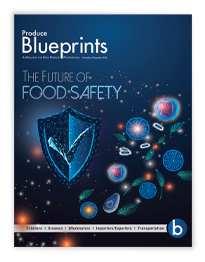DiFeliciantonio concurs. He observes some independent grocers are getting bigger, and may operate four or five stores. “There is a continued emphasis on freshness: ‘Eat fresh. Eat more fruits and vegetables.’ That mantra fuels their growth and ours.”
Building Bridges
In hopes of building bridges with the larger retailers, Philadelphia was chosen as the host of a Produce Marketing Association “Fresh Connections: Retail” event back in June, which brought a number of retail representatives to the PWPM for a tour. Also on hand were representatives from both Pennsylvania’s and New Jersey’s state departments of agriculture. The exposure was a good way for retailers to see firsthand what the facility and its many merchants have to offer.
Philly’s eight-county region is home to a number of grocery chains, and shoppers spend upwards of $8 billion annually on food. But there’s been much transition over the last couple years as up-and-comers like Whole Foods Markets invade the area, and old favorites like Genuardi’s, owned by Safeway, Inc., are closed or sold off (many locations went to Giant Food Stores, bolstering its presence).
Established leaders include the big three: ShopRite (owned by Wakefern Food Corp.), Giant Food Stores (owned by Ahold), and Acme (owned by Supervalu, Inc.).
Combined, these three heavyweights control more than 35 percent of the area’s grocery shopping. Two more retailers gaining market share are BJ’s Wholesale Club, which took over several stores in the city and suburbs formerly operated by A&P, Pathmark, and Super Fresh, and Wegmans, which opened several new locations the past few years. Other popular players include Save-A-Lot, Thriftway, Shop n Bag, and Redner’s Warehouse Markets.
As previously noted, upscale retailer Whole Foods Market is trying to make its mark with a handful of stores, while chains and independents alike continue to battle both Walmart and Target’s additional food offerings.
Last but not least are drugstores like Walgreens, CVS, and Rite Aid, which are dedicating more shelf space to fresh food, while convenience stores like Seven-Eleven and Wawa—which hold sway in the area with more than 450 stores combined—are carrying increasing amounts of fresh produce and on-the-go prepared foods.
Beyond retailers, the PWPM’s customer mix is as varied as its rainbow of goods. The market supplies hospitals, restaurants, schools, and processors. Neighborhood co-ops and nonprofits shop the market, too. DiFeliciantonio notes, “We serve individual households, too. It’s well lit, so families feel safe coming here.”



